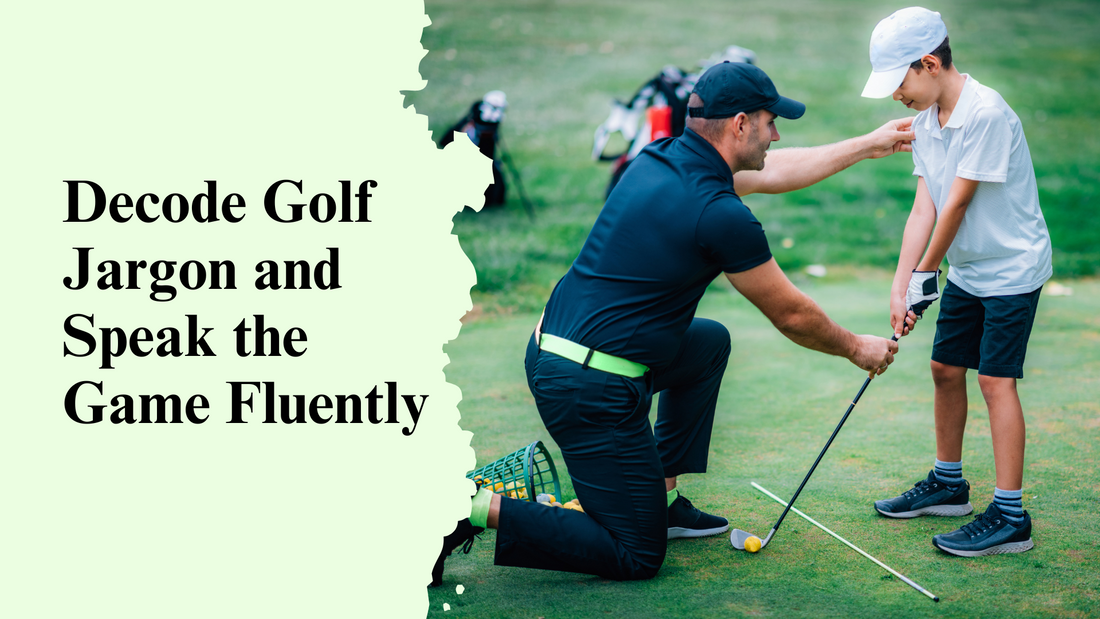
Decode Golf Jargon and Speak the Game Fluently
Golf is more than just a game of skill, it’s a sport with its own unique language. If you're new to the course, hearing terms like "birdie," "bogey," or "grounding the club" might feel confusing. So, before you work on perfecting your swing, let’s first make sure we're all speaking the same language. Understanding golf lingo not only helps you communicate better with fellow players but also boosts your confidence on the course. Let’s dive into the essential terms every golfer should know.
1. Scoring Terms: Keeping Track of Your Game
Scoring in golf is all about how many strokes (hits) it takes to complete a hole. Here are the key terms:
• Par : The ideal number of strokes you should take to finish a hole. If a hole is a "Par 4," you should try to complete it in four strokes.
• Birdie : A great score! It means you finished a hole in one stroke less than par. (Example: finishing a Par 4 in three strokes.)
• Eagle : Even better! This means completing a hole in two strokes under par. It’s a rare but exciting achievement.
• Bogey : One stroke over par. (Example: taking five strokes on a Par 4.)
• Double Bogey : Two strokes over par, which golfers try to avoid.
• Handicap : A number that represents a golfer’s skill level. The lower the handicap, the better the golfer. This helps players of different skill levels compete fairly.
Knowing these terms helps you track your game and talk golf like a pro!
2. Types of Shots: The Different Ways to Hit the Ball
Golf isn’t just about hitting the ball as hard as you can—you need the right shot for each situation. Here are some key shots:
• Drive : A long, powerful shot from the tee at the start of a hole.
• Putt : A soft, controlled stroke on the green to roll the ball into the hole.
• Chip : A short shot from just off the green to get the ball close to the hole.
• Pitch : A high shot that lands softly on the green, often used when you’re farther away.
• Bunker Shot : A special shot used to hit the ball out of a sand trap.
Each of these shots has a different purpose, and mastering them will improve your game.
3. Course Terms: Understanding the Layout
A golf course has different areas, each with a unique role. Here’s what you need to know:
• Tee Box : The starting point of each hole, where you take your first shot.
• Fairway : The neatly trimmed grass leading to the green, where you want your ball to land.
• Rough : The longer, thicker grass surrounding the fairway, which makes hitting the ball more difficult.
• Green : The smooth area where the hole is located, where you use your putter.
• Hazard : Any tricky area, like a water pond or sand bunker, that makes the hole more challenging.
Knowing these terms helps you plan your shots wisely and navigate the course better.
4. Key Techniques: Playing Smarter, Not Harder
Improving your golf game isn’t just about power—it’s about technique. Here are some key skills:
• Addressing the Ball : Getting into the right position before hitting the ball. This includes your stance, grip, and focus.
• Grounding the Club : Resting your club on the ground behind the ball before swinging. Be careful, this isn’t allowed in sand bunkers or water hazards!
• Target Alignment : Making sure you aim correctly toward where you want the ball to go. Proper alignment helps improve accuracy.
Practicing these basics will make your shots more consistent and improve your overall game.
5. Common Golf Phrases: Sound Like a Pro
Golfers have their own special way of talking about the game. Here are some phrases you might hear:
• "Fore!" : A warning that is “shouted” when a ball is flying toward someone. If you hear this, watch out!
• Mulligan : A second chance! In casual games, players sometimes take a "do-over" shot if their first shot was bad.
• Up and Down : When a player takes just two strokes to get the ball into the hole from near the green.
• Scramble : A fun game format where teammates all hit their balls, then choose the best one and continue from there.
Using these terms will help you fit in with other golfers and enjoy the game even more!
Why It’s Important to Know These Terms
You might think golf is all about the swing, not the words but understanding the lingo is just as important. Golf is a game of precision, and knowing the right terms helps you grasp instructions, strategies, and tips more effectively.
Think of these terms as the building blocks of your golf knowledge.
When you can tell the difference between the fairway and the green, or understand what it means to address the ball versus grounding the club, you’ll follow lessons more easily and communicate better with fellow golfers.
Mastering golf terminology is like having a map in an unfamiliar city. It helps you navigate the game with confidence. So, keep these words in mind as you step up to the tee.
Conclusion
Golf isn’t just about swinging a club, it’s a mix of skill, strategy, and tradition. Knowing the right terms makes the game more enjoyable, whether you're tracking your score, mapping out your next shot, or sharing a laugh with fellow golfers. So, the next time you step onto the course, talk the talk, play with confidence, and truly immerse yourself in the game!

